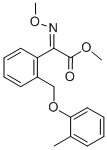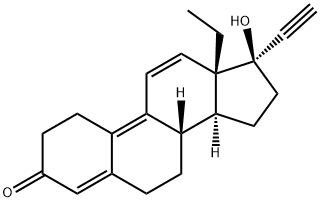A5452112
Methyl heptenone , 98% , 110-93-0
CAS NO.:110-93-0
Empirical Formula: C8H14O
Molecular Weight: 126.2
MDL number: MFCD00008905
EINECS: 203-816-7
| Pack Size | Price | Stock | Quantity |
| 25ML | RMB35.20 | In Stock |
|
| 100ML | RMB74.40 | In Stock |
|
| 500ML | RMB243.20 | In Stock |
|
| 2.5L | RMB959.20 | In Stock |
|
| others | Enquire |
Update time: 2022-07-08
PRODUCT Properties
| Melting point: | -67.1 °C |
| Boiling point: | 73 °C18 mm Hg(lit.) |
| Density | 0.855 g/mL at 25 °C(lit.) |
| vapor pressure | 1.121hPa at 20℃ |
| FEMA | 2707 | 6-METHYL-5-HEPTEN-2-ONE |
| refractive index | n |
| Flash point: | 123 °F |
| storage temp. | Sealed in dry,2-8°C |
| solubility | Soluble in methanol and chloroform. |
| form | Liquid |
| color | Colorless to Light yellow |
| Specific Gravity | 0.855 |
| PH | 6.6 (3g/l, H2O, 25℃) |
| Odor | at 10.00 % in dipropylene glycol. citrus green musty lemongrass apple |
| Odor Type | citrus |
| explosive limit | 1.1-7.3%(V) |
| biological source | synthetic |
| Water Solubility | insoluble |
| JECFA Number | 1120 |
| BRN | 1741705 |
| LogP | 2.07 at 25℃ |
| CAS DataBase Reference | 110-93-0(CAS DataBase Reference) |
| NIST Chemistry Reference | 5-Hepten-2-one, 6-methyl-(110-93-0) |
| EPA Substance Registry System | 6-Methyl-5-hepten-2-one (110-93-0) |
Description and Uses
6-Methyl-5-hepten-2-one has a strong, fatty, green, citrus-like odor, and a bittersweet taste reminiscent of pear. May be prepared from oil of lemongrass or from citral by refluxing for 12 hours in aqueous solution containing K2C 03, and subsequent distillation and vacuum fractionation; from acetoacetic ester and methylbuten-3-ol-2 with aluminum alcoholate in Carroll’s reaction followed by pyrolysis of the ester.
6-Methyl-hepten-2-one is used in the synthesis of thyrsiferyl 23-Acetate which acts as an anti-leukemic inducer of apoptosis.
Safety
| Symbol(GHS) |  GHS02 |
| Signal word | Warning |
| Hazard statements | H226 |
| Precautionary statements | P210-P233-P240-P241-P242-P243 |
| Risk Statements | 10-36/37/38 |
| Safety Statements | 16-24/25 |
| RIDADR | UN 1224 3/PG 3 |
| WGK Germany | 1 |
| RTECS | MJ9700000 |
| TSCA | Yes |
| HazardClass | 3 |
| PackingGroup | III |
| HS Code | 29141990 |
| Toxicity | The acute oral LD50 in rats was reported as 3.5 g/kg (B?r & Griepentrog, 1967) and as 4T g/kg (3.33-5.04 g/kg) (Keating, 1972). The acute dermal LD50 exceeded 5 g/kg (Keating, 1972). |




